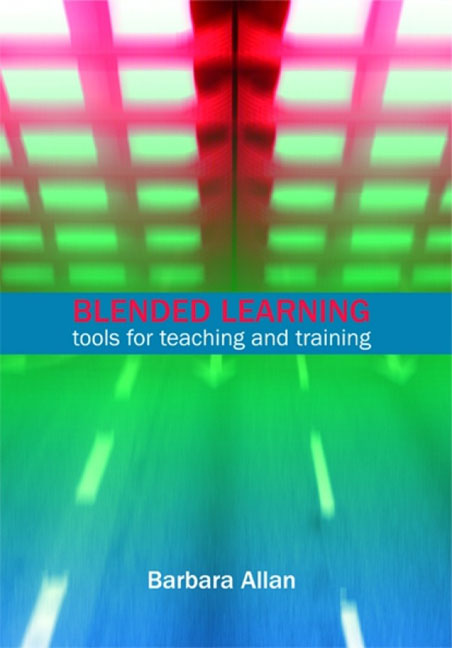Book contents
- Frontmatter
- Contents
- List of figures
- List of tables
- Acknowledgements
- 1 Introduction
- 2 Tools and technologies
- 3 Models of teaching and learning
- 4 Planning and designing blended learning programmes
- 5 Planning and designing learning activities
- 6 Working with groups
- 7 Working as a tutor
- 8 Communities of practice
- 9 Managing blended learning projects
- Index
- Frontmatter
- Contents
- List of figures
- List of tables
- Acknowledgements
- 1 Introduction
- 2 Tools and technologies
- 3 Models of teaching and learning
- 4 Planning and designing blended learning programmes
- 5 Planning and designing learning activities
- 6 Working with groups
- 7 Working as a tutor
- 8 Communities of practice
- 9 Managing blended learning projects
- Index
Summary
The aim of this chapter is to introduce blended learning in the context of information and library services (ILS), and also to introduce the book and its structure. Following this introduction, the chapter considers the following topics: teaching and training in the 21st century; what is blended learning?; and the structure of the book.
The aim of the book is to provide a practical guide to library and information workers who are involved in education and training, and who are interested in designing and delivering blended learning experiences to their colleagues and customers. The term ‘blended learning’ has risen in popularity from around 2000 and, in the context of this book, it is used to mean a holistic approach to learning that involves a blend of different approaches, e.g. face-to-face and e-learning, the use of different technology-based tools, or the blending of classroom-based and work-based learning. This is explored in more detail in the next section.
One of the challenges of writing this book is that this is a rapidly developing field so my focus is on providing the underpinning theories behind good-quality blended learning and a range of practical examples. In addition, I consider some of the many challenges currently faced by ILS staff, including the need to work with very large groups and also with diverse groups. In taking this approach, I hope that this book will provide a useful resource for both experienced practitioners and those who are relatively new to the design and delivery of blended learning. I also consider project management in the context of the design and delivery of new or adapted blended learning programmes. Many ILS establish projects, sometimes using external funding, as a means of developing their education and training provision. The chapter on project management (Chapter 9) provides a practical overview to this subject using examples from current practice.
I have based this book on information and knowledge gained from:
• my experiences in the design and delivery of traditional training programmes, e-learning programmes and also blended learning programmes
• discussions with colleagues working in ILS
• feedback from colleagues who have attended my workshops (based at CILIP) and ILS conferences
• visits (both real and virtual) to a wide range of ILS
• professional networks and conferences, and also the literature.
- Type
- Chapter
- Information
- Blended LearningTools for teaching and training, pp. 1 - 14Publisher: FacetPrint publication year: 2007



